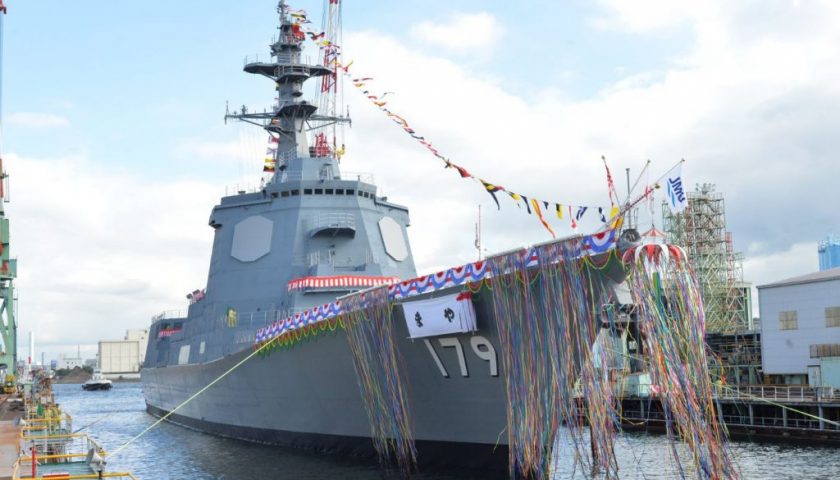In December 2020, Tokyo announced the design of two new destroyers equipped with American anti-aircraft and anti-missile technology AEGIS. But unlike the 4 Kongo-class destroyers, as well as the two Atago-class destroyers and the two Maya-class destroyers derived from it, the new ships will not have the mission of supporting Japanese naval power, but of protecting the Japanese islands from the growing threat posed by North Korean and Chinese ballistic missiles. Initially, Tokyo intended to rely on the AEGIS-Ashore technology, already in service in Romania and Poland, making it possible to deploy an AN/SPY-1 radar and SM-3 exo-atmospheric anti-ballistic missiles capable of countering missiles long-range ballistics. However, the residents of the site chosen by the Japanese self-defense forces protested strongly, especially since the risk of fallout from pieces of missiles near residential areas was significant.
Whatever, after canceling the AEGIS Ashore program, Tokyo had to turn to another alternative to counter the now significant threat posed by the new North Korean ballistic missiles. To respond to this, the Japanese self-defense forces proposed to design two new destroyers equipped with AEGIS technology, but dedicated to this mission, so as to free the 8 other more versatile destroyers from this strategic but restrictive task. Indeed, to carry out this specific task, it would have been necessary to build much more than two destroyers of the Kongo class or derivatives, more versatile ships but having neither the anti-ballistic firepower nor sufficient autonomy at sea. to guarantee more than 180 days of operational mission per year.

We now know more about the configuration chosen for the future Aegis System-Equipped Vessel or ASEV. Thus, the ships will be much larger than the current Japanese destroyers, with a length of 210 meters against 170 meters for the Maya class, a master beam of 40 meters against 22 meters, and a displacement of almost 20.000 tons, against 10.500 tons. In addition to the AEGIS system, and the SPY-7 radar optimized for ballistic determination, 6 vertical missile launch systems, i.e. 48 silos, will be installed on the foredeck, and 4 VLS, i.e. 32 silos behind the chimneys, i.e. a total of 80 silos vertical. These will accommodate multi-purpose anti-ballistic missiles SM-6 able to counter semi-ballistic trajectory missiles and hypersonic missiles, SM-3 exo-atmospheric anti-ballistic missiles to intercept long-range missiles having an apogee beyond the atmosphere, as well as Type 12 mod long-range anti-ship and cruise missiles, probably in application of the new Japanese second strike doctrinee.

75% of this article remains to read,
Subscribe to access it!
The Classic subscriptions provide access to
articles in their full version, and without advertising,
from 6,90 €.
Newsletter subscription
Register for the Meta-Defense Newsletter to receive the
latest fashion articles daily or weekly


[…] […]